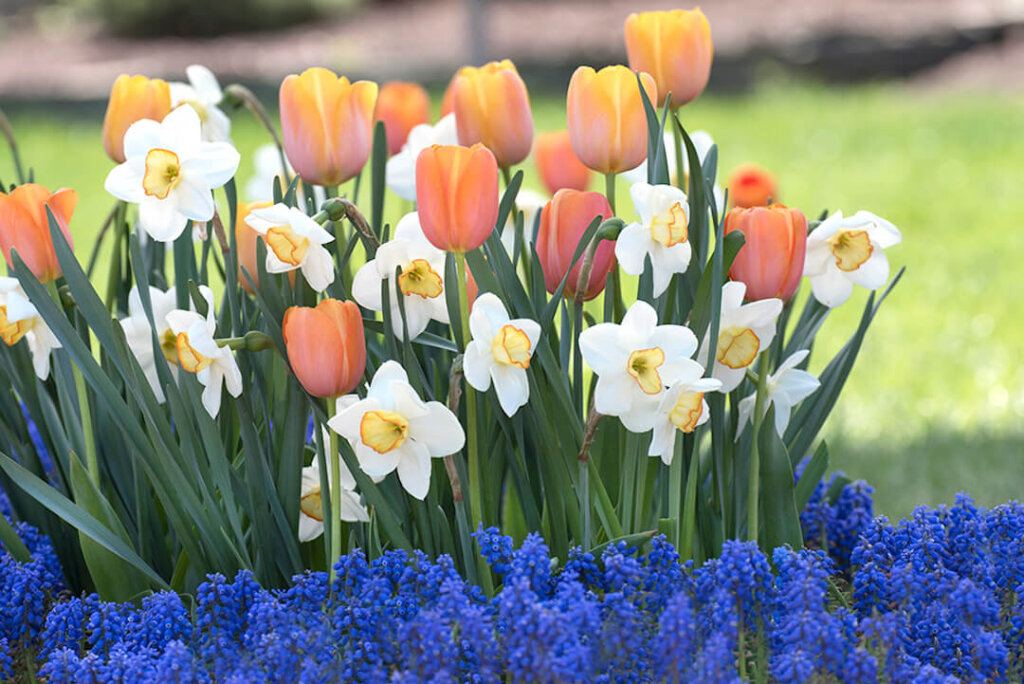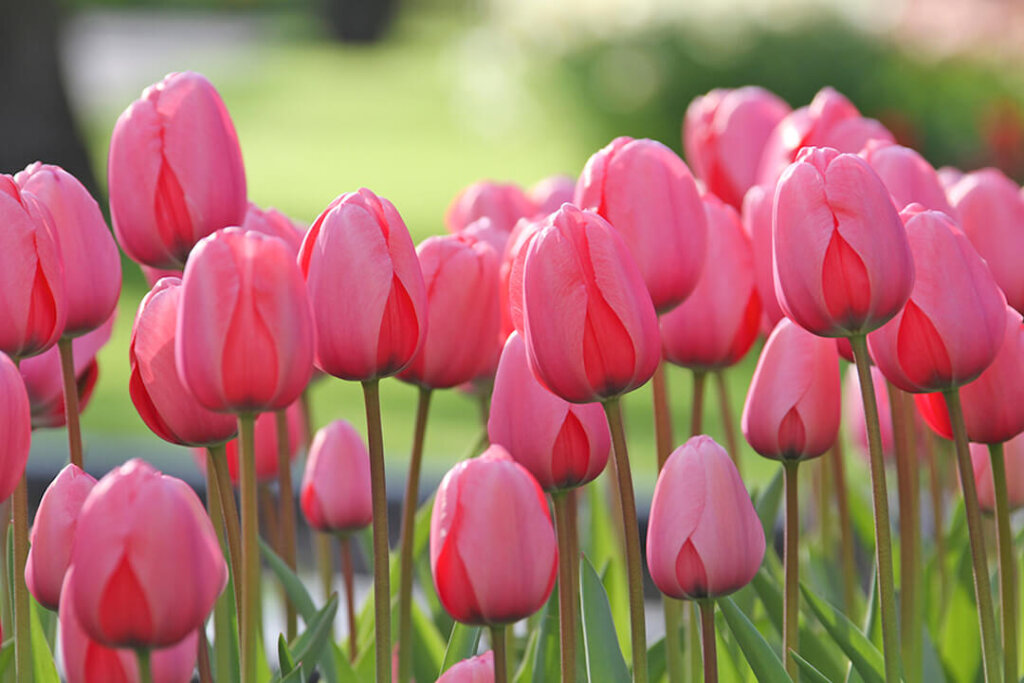
Tulips are one of the most popular annual flowers grown in North Texas landscapes. Despite their popularity, tulips can be challenging to grow here. The key to dramatic displays – like those at the Arboretum’s annual 500,000-bulb celebration – is proper timing and variety selection.
When To Plant
The best time to plant tulips in North Texas is between Thanksgiving and Christmas, or once soil temperature is between 50-55 degrees. This is also when tulip bulbs are available for purchase from local nurseries.
If you plan to order online, place your order in the summer or as soon as tulip bulb suppliers start accepting orders. Most bulb companies will ship your order at the right time for planting. Ordering early is more important than ever because of the global surge in demand for gardening productions following the 2020 lockdown.

Do Tulip Bulbs Need Chilling?
Whether or not tulip bulbs need to be pre-chilled before planting in North Texas is a topic of much debate among garden experts and home gardeners alike.
In northern climates with cold winters, the chilling that tulips need occurs naturally over the winter. Because of our warmer weather, many nurseries and bulb suppliers recommend pre-chilling tulip bulbs prior to planting in order to simulate a winter chill. Some local nurseries, like North Haven Gardens, sell bulbs that have been pre-chilled. The Arboretum also plants pre-chilled bulbs.
There are those, however, who say that pre-chilling isn’t necessary. Harry Hollander, late founder of the area’s largest bulb importer Abbott-Ipco, always denied that tulips needed chilling.
How to Chill Tulip Bulbs At Home
If you decide to chill your bulbs, you can keep them in the refrigerator in a paper bag for six to eight weeks. Just be sure not to store fruit in the same refrigerator since the ethylene gas that fruit emits can interfere with flower development.

How To Plant Tulips
- Choose an area that get as much sun as possible. Tulips will tolerate part-shade, but one of the main reasons that tulips fail to bloom is being planted in an area that is too shady.
- Before planting, incorporate 2-3 inches of high-quality, well-rotted compost (purchased at a local nursery, not a home improvement store) into the soil. If your soil is poorly draining or heavily compacted, also incorporate expanded shale to improve drainage and improve soil texture.
- Plant tulips 2-4 inches apart at a depth that is three-times the diameter of the bulb. For most tulip bulbs, this is about 6 inches deep. Spacing
- Plant tulips in large groupings, not in rows. Tulips look their best when planted densely and grouped together.
- Pansies are a good winter annual to plant over the tulips.

Should You Fertilize Your Tulips?
For a very long time, North Texas gardeners were told that they should add bonemeal (a source of phosphorous) to the soil when planting spring-flowering bulbs like tulips and daffodils.
The reason this is bad advice is because our North Texas soils already contain plenty of phosphorus. In fact, most North Texas soil tests show a deficiency of nitrogen but sufficient levels of phosphorous to support plant growth. Phosphorus also tends to build up in soil over time.
Furthermore, tulip bulbs already contain all of the nutrients that the plant needs to grow and bloom.
Keeping Out Squirrels
The number one complaint I get from students and readers is that they lose most of their bulbs to squirrels. There are two ways to help prevent this from happening:
- Make sure that your bulbs are planted at least six inches deep. The main reason that people lose bulbs to squirrels is that they are not planted deep enough.
- Add blood meal to soil after planting. This is what the teams at the Arboretum do at planting. Blood meal is thought to deter squirrels and birds.
The Best Types of Tulips for North Texas Are Single Late and Double Late
Experts might disagree on chilling and fertilizing, but they definitely don’t disagree with the fact that the best types of tulips to plant in North Texas are single late and double late types.
Single late tulips are typically very large and long-lasting. Growing up to 28″ tall, single late tulips also have good heat tolerance.
Double late tulips are some of the last to bloom in the spring, and boast beautiful, delicate, peony-like flowers.


11 Highly Recommended Tulip Varieties for North Texas
The Dallas Arboretum makes a considerable investment in their annual Dallas Blooms event. The following eleven varieties of tulips represent Arboretum favorites that are regularly used in their largest and most dramatic displays.
These varieties are proven to perform in North Texas and are exceptionally beautiful.
- Mrs. John T. Scheepers
- Menton
- Pink Impression
- Kingsblood
- Queen of the Night
- Maureen
- Dordogne
- Renown
- Sorbet
- Temple of Beauty
- Temple’s Favourite

For a complete list of the tulip bulbs approved by the Dallas Arboretum Plant Trials department, please visit this link.
- Can Eating Tomatoes Help Prevent Weight Gain? New Study Says Yes - May 25, 2025
- New to Gardening? Join Our Step-by-Step Beginner Gardening Class - April 24, 2025
- Why “Intensive” Gardening is Not Good - March 9, 2025



